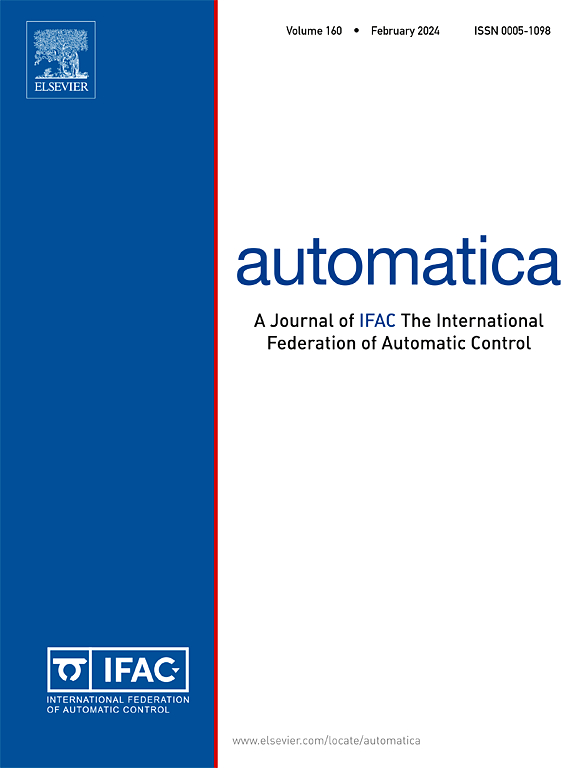线性系统的数据驱动最小-最大MPC:鲁棒性和适应性
IF 5.9
2区 计算机科学
Q1 AUTOMATION & CONTROL SYSTEMS
引用次数: 0
摘要
数据驱动控制器的设计是一个重要的研究问题,特别是当数据被噪声破坏时。本文针对未知线性时不变(LTI)系统,提出了一种基于噪声输入状态数据的数据驱动最小-最大模型预测控制(MPC)方案。未知的系统矩阵用带有噪声的输入状态数据的集合隶属度表示来表征。利用这一表述,我们推导出了最坏代价的上界,并通过半定规划(SDP)确定了相应的最优状态反馈控制律。证明了所得到的闭环系统是鲁棒稳定的,并且满足输入约束和状态约束。此外,我们提出了一种自适应数据驱动的最小-最大MPC方案,该方案利用额外的在线输入状态数据来提高闭环性能。数值算例表明了所提方法的有效性。本文章由计算机程序翻译,如有差异,请以英文原文为准。
Data-driven min–max MPC for linear systems: Robustness and adaptation
Data-driven controllers design is an important research problem, in particular when data is corrupted by the noise. In this paper, we propose a data-driven min–max model predictive control (MPC) scheme using noisy input-state data for unknown linear time-invariant (LTI) system. The unknown system matrices are characterized by a set-membership representation using the noisy input-state data. Leveraging this representation, we derive an upper bound on the worst-case cost and determine the corresponding optimal state-feedback control law through a semidefinite program (SDP). We prove that the resulting closed-loop system is robustly stabilized and satisfies the input and state constraints. Further, we propose an adaptive data-driven min–max MPC scheme which exploits additional online input-state data to improve closed-loop performance. Numerical examples show the effectiveness of the proposed methods.
求助全文
通过发布文献求助,成功后即可免费获取论文全文。
去求助
来源期刊

Automatica
工程技术-工程:电子与电气
CiteScore
10.70
自引率
7.80%
发文量
617
审稿时长
5 months
期刊介绍:
Automatica is a leading archival publication in the field of systems and control. The field encompasses today a broad set of areas and topics, and is thriving not only within itself but also in terms of its impact on other fields, such as communications, computers, biology, energy and economics. Since its inception in 1963, Automatica has kept abreast with the evolution of the field over the years, and has emerged as a leading publication driving the trends in the field.
After being founded in 1963, Automatica became a journal of the International Federation of Automatic Control (IFAC) in 1969. It features a characteristic blend of theoretical and applied papers of archival, lasting value, reporting cutting edge research results by authors across the globe. It features articles in distinct categories, including regular, brief and survey papers, technical communiqués, correspondence items, as well as reviews on published books of interest to the readership. It occasionally publishes special issues on emerging new topics or established mature topics of interest to a broad audience.
Automatica solicits original high-quality contributions in all the categories listed above, and in all areas of systems and control interpreted in a broad sense and evolving constantly. They may be submitted directly to a subject editor or to the Editor-in-Chief if not sure about the subject area. Editorial procedures in place assure careful, fair, and prompt handling of all submitted articles. Accepted papers appear in the journal in the shortest time feasible given production time constraints.
 求助内容:
求助内容: 应助结果提醒方式:
应助结果提醒方式:


